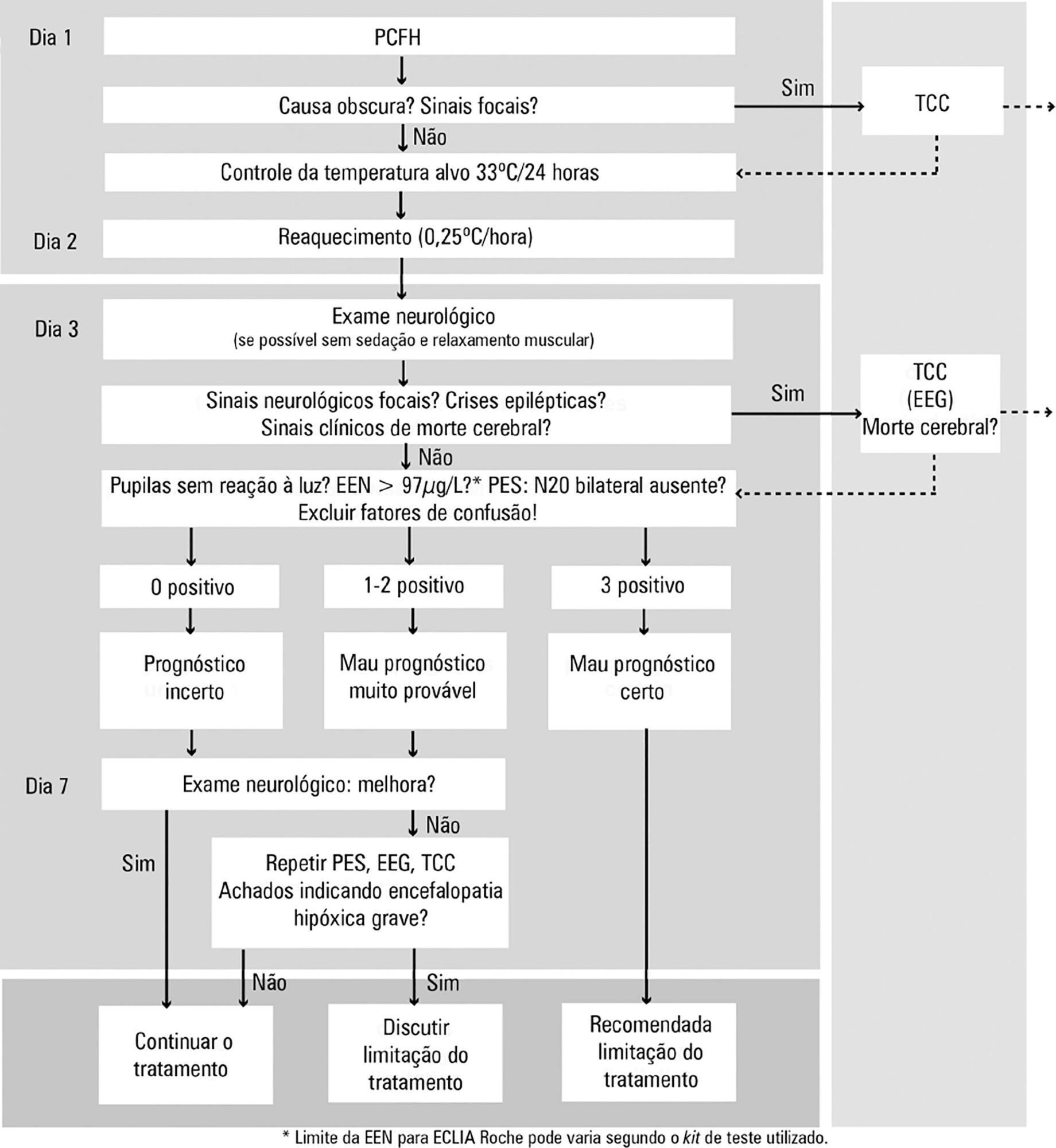
Target temperature management (TTM) is well-known to reduce secondary cell damage after cardiac arrest in patients with presumed cerebral hypoxia. The treatment of this reperfusion syndrome, especially in terms of temperature management, is not fully understood. Several clinical randomized controlled trials and other studies have shown TTM’s effectiveness in improving neurological outcomes.() Therefore, TTM has been recommended in the updated guidelines of the European Resuscitation Council since October 2015.() Briefly, TTM is indicated for almost all survivors after cardiac arrest with different levels of evidence supporting this claim. The initial rhythm (shockable or non-shockable) and the location of the arrest (in-/out-of-hospital cardiac arrest) do not exclude treatment if the patient remains comatose after the return of spontaneous circulation. Due to new published data, the recommended target temperature is between 32°C and 36°C for 24 hours; the optimal target temperature and duration of cooling is still unknown.() In addition, modern TTM is only a part of the care for the post-cardiac arrest phase, including early percutaneous coronary intervention, optimization of blood glucose levels and ventilator setup to achieve normoxia and normocapnia. Several surveys in Europe revealed an increasing acceptance of TTM after cardiac arrest, but there is still an intermediate rate of using professional computer feedback guided temperature management and the standard operating protocol (SOP).(–) The reasons behind the reluctance are numerous. When comparing the benefit of using TTM with neurological outcomes and recovery, some of these reasons will no longer acceptable in the future.
[…]
Search
Search in:


Comments